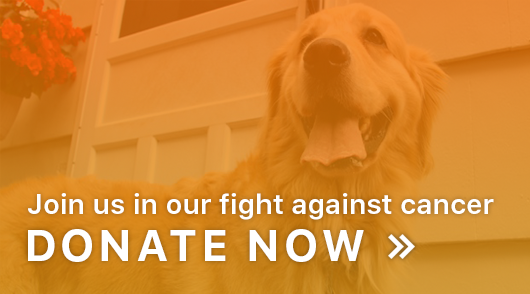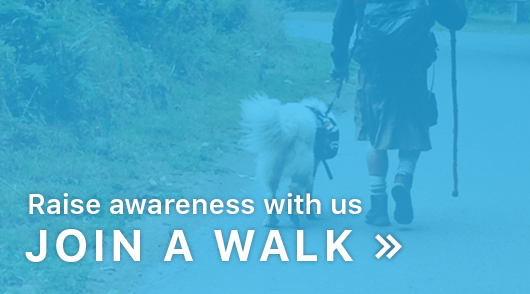From Post and Courier
By Jerrel Floyd
Just like humans, as pets live longer, the threat of cancer is increasingly something that dogs and cats face. And surgery and chemotherapy for animals are often recommended avenues of treatment.
According to the Animal Cancer Foundation, of the 65 million dogs in the United States, 6 million of those dogs will likely be diagnosed with cancer. With dogs developing cancer at a similar rate of humans, the American Veterinary Medical Association reports that almost half of the dogs over the age of 10 will possibly develop cancer.
Chemotherapy is a medical treatment that involves the killing of cancer cells. Though people might attempt to liken the chemotherapy experience of humans with that of a dog like Mia, local veterinary oncologists emphasize that there are key differences.
“It’s kind of a different ball game,” said Dr. Michelle Wall, an oncologist with Veterinary Specialty Care.
At the medical facility, Wall said each oncology vet sees up to 15 pets per day.
Their owners are often mistaken, she said, in thinking that chemotherapy for pets will be as harsh as it often is for humans.
“You can see it on the owner’s face, this wall goes up,” she said.
One of things that she tries to emphasize with owners is that when it comes to chemotherapy for dogs, quality of life is always considered before quantity of life. Their goal is to always cure the cancer, but they want to do it in a way that doesn’t prevent the dog from living a happy and productive life.
Since dogs can’t verbally consent to chemo like a human, Wall said that it’s imperative their chemo patients experience as few symptoms as possible. Because of this, though humans and dogs take the same chemotherapy medications, the chemo dosage for a dog is significantly lower than that of a human.
“It’s not really fair to make animals sick with chemotherapy,” said Dr. Gabrielle Angelo, one of Wall’s colleagues. “So that’s where some of that compromise comes in of giving a lower dose to minimize side effects.”
For Mia, it all started in 2016 when she was preparing for a trip to Orlando for a show. During a routine vet visit, her doctor noticed a lump on one of her nipples. Assuming it was possibly a blocked milk duct, the vet suggested to Mary that she massage the lump and contact the office if it didn’t go away.
But after two weeks, the lump started to grow. A biospy was conducted and Mia’s vet discovered that the lump was an aggressive mammary gland tumor or breast cancer.
Once she had surgery to have the tumor removed, the dog almost immediately began the first of six rounds of chemo to decrease chances of the cancer returning. The couple of rounds of chemo were the most intense.
“It scared me to death,” Mary Sudzina said.
According to Sudzina, Mia was increasingly fatigued and didn’t act like herself. The doctors immediately adjusted the treatment and the dosage.
The following rounds were a little bit more manageable. Later that year, Mia was diagnosed as cancer-free and has remained so for the past two years.
“I guess she’s one of the lucky ones,” Sudzina said.
That same year, Wall treated a 9-year-old poodle named Blackjack, who was diagnosed with Stage 5 lymphoma. She told Blackjack’s owners, Lisa and Samuel Kinon, that the dog would be lucky to live six months after surgery and chemotherapy.
“They basically said if you don’t operate, he won’t live through the weekend,” Lisa Kinon remembered.
Two years later, Jack, like Mia, is still alive. His owners credit the care their dog received at Wall’s practice.
“They are unbelievable,” Samuel Kinon said.
Though the existence of cancer research for canines has fed research for how tumors are handled in humans, there are still gaps in research for canine cancer treatment. This has led many veterinary oncologists to reference human cancer research for dog treatments.
“They have more numbers to back up the data,” said Dr. Wall.
In a study on factors that influence owners’ decision on chemotherapy, researchers note that there still has not been a large-scale study on the side effects associated with animals on the treatment. This is partly why the communication and connection with the owners like Mary Sudzina is so vital for doctors who work in veterinary oncology.
With Mia, her owner believes that it was the combination of the oncologist and the work they were doing at home that contributed to her dog’s recovery. While Mia was sick, Sudzina said she always tried to remain positive and push Mia to get as much exercise as she could.
“I almost didn’t want to continue, but our goal was to have Mia live a full and happy life,” she said. “And, on our wish list was the opportunity to show again.”
Though costs were not discussed in the study on pet owners’ decisions to pursue chemotherapy, they can be considerable. For Mia, the Sudzina family spent around $7,000 on surgery and chemotherapy. According to the Veterinary Cancer Society, the cost for a single dose of chemotherapy can range between $150 and $600. With Mia it averaged around $550.
Today, she still goes in for check-ups every three months to make sure the cancer hasn’t come back. So far, she’s in the clear.
Advice for Pet Owners
- Always note consistent changes in behavior and appetite to local vet.
- For dogs and cats, don’t be afraid to highlight any new lumps to a local vet. Though non-lethal fatty lumps are more common in dogs, they are especially rare in cats.
- Trust the advice of a medical expert.








